
Quality Technology and Quantitative Management
Scope & Guideline
Unveiling critical insights at the intersection of quality and quantity.
Introduction
Aims and Scopes
- Statistical Process Control and Monitoring:
The journal emphasizes research on control charts, monitoring techniques, and methodologies such as EWMA and CUSUM for ensuring product quality and process stability. - Reliability Engineering and Assessment:
A significant portion of the research is dedicated to reliability modeling, including studies on life-testing, failure rates, and the reliability of complex systems under various conditions. - Queueing Theory and Systems Analysis:
The journal publishes articles that analyze queueing systems, focusing on performance metrics, customer behavior, and optimization of service processes. - Optimization in Quality Management:
Research on optimization techniques for quality improvement, production efficiency, and maintenance policies is a key focus area, often employing mathematical models and simulations. - High-Dimensional Data Analysis:
The journal explores methodologies for handling and analyzing high-dimensional data, particularly in quality monitoring and process control contexts. - Quantitative Risk Management:
There is a growing interest in quantitative approaches to assess and mitigate risks in manufacturing and service operations, integrating statistical methods with decision-making frameworks.
Trending and Emerging
- Bayesian Approaches to Quality and Reliability:
Research employing Bayesian methods for quality control and reliability assessment is gaining traction, allowing for more flexible modeling and incorporation of prior knowledge into analyses. - Machine Learning and Data-Driven Approaches:
There is a notable increase in studies incorporating machine learning techniques for predictive modeling and process optimization, highlighting the integration of advanced data analytics in quality management. - Sustainability and Quality Improvement:
Emerging research focuses on the intersection of sustainability and quality management, exploring how quality improvement initiatives can support sustainable practices in manufacturing and service operations. - Integrated Maintenance and Quality Strategies:
The trend is shifting towards integrated approaches that combine maintenance strategies with quality control processes, aiming for holistic improvements in operational efficiency. - Complex Systems and Network Reliability:
Research on the reliability of complex systems, including multi-state and networked systems, is becoming increasingly prominent, reflecting the need to address the intricacies of modern manufacturing and service environments.
Declining or Waning
- Traditional Quality Control Techniques:
While still relevant, there has been a noticeable decrease in the publication of papers focusing solely on traditional Shewhart control charts and basic statistical quality control methods, as researchers increasingly explore more advanced and integrated approaches. - Single-Parameter Reliability Models:
Research focusing on basic single-parameter reliability models has diminished, as there is a growing emphasis on more complex, multi-component, and dynamic reliability systems that better reflect real-world scenarios. - Static Queueing Models:
The popularity of static queueing models has declined in favor of more dynamic and adaptive queueing systems, which account for real-time variations in customer behavior and service processes. - Basic Statistical Inference Techniques:
There is a shift away from classical statistical inference techniques towards more innovative approaches that incorporate Bayesian methods, machine learning, and computational statistics.
Similar Journals

Journal of Reliability and Statistical Studies
Fostering Excellence in Statistical Analysis and Reliability ResearchJournal of Reliability and Statistical Studies, published by RIVER PUBLISHERS, is a vital resource for researchers and professionals engaged in the fields of analysis, statistics, and numerical methods. With an ISSN of 0974-8024 and E-ISSN 2229-5666, this journal has carved a niche since its inception, converging from 2019 to 2024 to deliver cutting-edge research. The journal is recognized in the academic community, demonstrated by its rankings in Scopus: Mathematics (Analysis: Rank #108/193, Percentile 44; Statistics and Probability: Rank #170/278, Percentile 39; Numerical Analysis: Rank #58/88, Percentile 34). Despite being categorized as Q4 in its field for 2023, it aims to cultivate a robust platform for innovative studies that push the boundaries of reliability and statistical methodologies. Researchers will find value in its commitment to disseminating both theoretical and practical advancements, making it an essential journal for students and scholars striving for excellence in statistical analysis and reliability engineering.
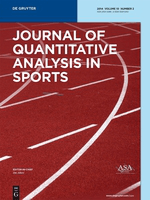
Journal of Quantitative Analysis in Sports
Innovating performance analysis for a competitive edge.The Journal of Quantitative Analysis in Sports is a premier academic platform dedicated to advancing the field of sports analytics through rigorous quantitative research. Published by WALTER DE GRUYTER GMBH in Germany, the journal boasts an impact factor that places it firmly within the realms of innovation, with 2023 rankings reflecting a Q2 in Decision Sciences and a distinguished Q1 in Social Sciences. This makes it an essential resource for researchers and practitioners alike, offering insights into quantitative methodologies applicable to the sports domain. Focusing on topics ranging from performance analysis to predictive modeling, the journal encourages submissions that push the boundaries of existing knowledge and foster interdisciplinary collaboration. For those committed to the evolution of sports analytics, the Journal of Quantitative Analysis in Sports serves as a vital source of high-quality research and thought leadership.
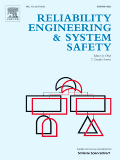
RELIABILITY ENGINEERING & SYSTEM SAFETY
Exploring the Intersection of Reliability and Quality.RELIABILITY ENGINEERING & SYSTEM SAFETY is a leading interdisciplinary journal published by Elsevier Sci Ltd, dedicated to advancing knowledge in the fields of applied mathematics, industrial and manufacturing engineering, and safety, risk, reliability, and quality. With a significant presence since its inception in 1983, this esteemed journal, identifiable by ISSN 0951-8320 and E-ISSN 1879-0836, holds an impressive impact factor and ranks in the top quartile (Q1) of its categories according to the most recent metrics. Specifically, it has achieved remarkable standings in Scopus, ranking #3 out of 207 in Safety, Risk, Reliability and Quality, marking it in the 98th percentile, and #21 out of 384 in Industrial and Manufacturing Engineering, at the 94th percentile. This distinction underscores the journal's vital role in shaping research and innovation in its fields. While it does not operate under an open access model, RELIABILITY ENGINEERING & SYSTEM SAFETY remains an essential resource for researchers, professionals, and students, aiming to publish high-quality articles that facilitate the understanding and application of reliability engineering and systemic safety within various industrial contexts. Stay ahead in cutting-edge research by engaging with the latest articles and findings from this influential journal.
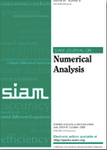
SIAM JOURNAL ON NUMERICAL ANALYSIS
Empowering Research with Cutting-Edge TechniquesSIAM Journal on Numerical Analysis, published by SIAM Publications, is a leading academic journal dedicated to the rigorous exploration of numerical methods and algorithms across applied and computational mathematics. Since its inception in 1969, this journal has played a pivotal role in advancing the field, achieving a distinguished impact factor that places it in the Q1 quartile for Applied Mathematics, Computational Mathematics, and Numerical Analysis as of 2023. With Scopus rankings reflecting its high influence (Rank #102 in Applied Mathematics and Rank #16 in Numerical Analysis), this journal serves as an essential resource for researchers, professionals, and students aiming to stay abreast of cutting-edge developments in numerical methods. The journal's comprehensive scope covers theoretical advancements, implemented algorithms, and applications, making it indispensable for those engaged in high-level quantitative research and practice. Readers can access a wealth of innovative studies and insights, fostering a deeper understanding of numerical analysis techniques and their practical applications.
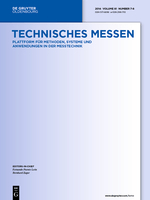
tm-Technisches Messen
Empowering Engineers with Cutting-Edge Insightstm-Technisches Messen is a reputable academic journal published by WALTER DE GRUYTER GMBH, focusing on the field of engineering, specifically in Electrical and Electronic Engineering and Instrumentation. With a rich history dating back to 1931, this journal serves as a critical platform for disseminating research, innovations, and developments relevant to measurement and instrumentation technologies. Despite its current quartile rankings of Q3 in Electrical and Electronic Engineering and Q4 in Instrumentation for 2023, the journal continues to attract submissions from leading researchers, offering insights that drive advancements within these fields. Researchers and practitioners can access a wealth of knowledge through this publication, fostering collaboration and sparking new ideas. Located in Berlin, Germany, the journal operates without an open-access model, making it essential for universities and institutions to play an integral role in supporting their library access to this valuable resource. As the journal continues to evolve through 2024 and beyond, it remains a significant contributor to the global discourse in measurement technologies, making it a must-read for anyone involved in these dynamic areas of study.

Journal of Sports Analytics
Bridging the Gap Between Data and PerformanceJournal of Sports Analytics, published by IOS PRESS, is a leading scholarly journal dedicated to the interdisciplinary study of sports analytics. With an ISSN of 2215-020X and an E-ISSN of 2215-0218, this open-access journal has been providing a platform for groundbreaking research since 2015. The journal seeks to advance the understanding of sports performance through the application of quantitative analysis, statistical methodologies, and innovative data-driven solutions. Given the increasing importance of analytics in optimizing athletic performance, performance enhancement, and strategic decision-making in sports, the Journal of Sports Analytics serves as an essential resource for researchers, practitioners, and students alike, positioning itself at the forefront of this dynamic field. By embracing an open-access model, the journal facilitates knowledge dissemination and encourages collaboration across the global sports community.
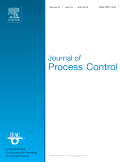
JOURNAL OF PROCESS CONTROL
Innovating Control Systems for Tomorrow's Industry.JOURNAL OF PROCESS CONTROL, published by Elsevier Science Ltd, is a pivotal resource for those engaged in the fields of process automation, control systems, and industrial engineering. With an ISSN of 0959-1524 and an E-ISSN of 1873-2771, this esteemed journal has been disseminating high-quality research since its inception in 1991, maintaining a convergence period up to 2024. Recognized in the 2023 category quartiles as a Q2 journal in Computer Science Applications and Control and Systems Engineering, and holding a prestigious Q1 ranking in Industrial and Manufacturing Engineering and Modeling and Simulation, it stands out for its contributions to theory and practice. The journal's access options provide easy engagement for researchers and practitioners alike. The impact factor emphasizes its significance, reflecting its reputation as a leading platform for innovative findings and methodologies across diverse disciplines, making it an essential tool for those advancing the frontiers of process control research.

Advances and Applications in Statistics
Bridging Theory and Practice in StatisticsAdvances and Applications in Statistics is a pivotal academic journal devoted to the dissemination of high-quality research findings in the field of statistics and its diverse applications. Published by PUSHPA PUBLISHING HOUSE, this journal aspires to serve as a dynamic platform for researchers, professionals, and students who aim to share innovative statistical methodologies and explore their practical implications across various disciplines. The journal, with its influential ISSN 0972-3617, fosters open discussion and collaboration within the statistical community, aiming to bridge theoretical advancements with real-world applications. As part of its ongoing commitment to academic integrity and excellence, Advances and Applications in Statistics encourages submissions that not only advance statistical theory but also illustrate their utility in solving contemporary issues in industries such as healthcare, finance, and economics. Although currently lacking an impact factor, the journal's dedication to quality research positions it as a significant contributor to the field. Researchers and academics looking to publish their work in a stimulating and supportive environment will find in this journal a valuable resource.

MATHEMATICAL FINANCE
Exploring the Intersection of Mathematics and FinanceMATHEMATICAL FINANCE is a prestigious journal published by Wiley, focusing on the interdisciplinary fields of finance, applied mathematics, accounting, and economics. With its ISSN 0960-1627 and E-ISSN 1467-9965, this journal has earned its place in the top tier of academic publications, reflected by its Q1 rankings across multiple categories in 2023, including Accounting, Applied Mathematics, Economics and Econometrics, Finance, and Social Sciences. MATHEMATICAL FINANCE, which commenced publishing in 1991, is recognized for its rigorous peer-review process and its significant contribution to the advancement of knowledge in quantitative finance methodologies and risk management practices. Although it does not currently offer open access, the journal remains an invaluable resource for researchers, professionals, and students seeking to stay abreast of the latest theoretical advancements and empirical studies in mathematical finance. Its impact factor and Scopus rankings further illustrate its high standing within the academic community, making it an essential platform for impactful research and scholarly discourse.

Journal of Computational Finance
Unlocking new methodologies for modern financial challenges.Journal of Computational Finance, published by INCISIVE MEDIA, stands at the forefront of interdisciplinary research, amalgamating the realms of finance, applied mathematics, and computer science. With its ISSN 1460-1559 and E-ISSN 1755-2850, this journal provides a vital platform for scholars and practitioners alike, aiming to advance methodologies and computational techniques that enhance financial decision-making processes. Although currently categorized in the Q3 quartile across various disciplines—including Applied Mathematics, Computer Science Applications, and Finance—its commitment to quality research is unwavering, as evidenced by its curated selection of innovative studies. The journal’s scope includes computational modeling, algorithmic trading, risk management, and quantitative finance solutions. Each volume seeks to not only foster academic discourse but also bridge theoretical findings with practical applications in the financial industry. Given its convergence from 2011 to 2024, the journal continues to evolve alongside the rapidly changing financial landscape, supporting researchers, students, and professionals in navigating the complexities of computational finance.